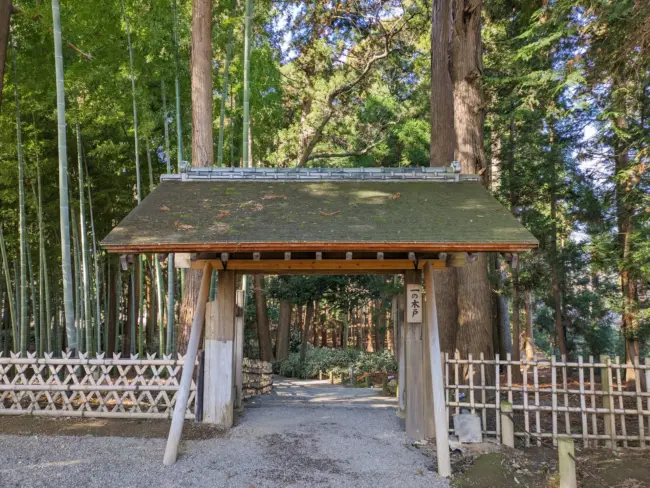+ Explore Other Areas
Tokyo, Osaka, Kyoto, Hokkaido, Fukuoka, Okinawa, Nara, Kanagawa, Aichi, Hiroshima, Yamanashi, Nagano, Oita, Gifu, Ishikawa, Shizuoka, Hyogo, Kumamoto, Miyagi, Wakayama, Nagasaki, Tochigi, Kagawa, Niigata, Kagoshima, Okayama, Chiba, Iwate, Aomori, Shiga, Gunma, Fukushima, Toyama, Ehime, Mie, Ibaraki, Saitama, Yamagata, Saga, Kochi, Tokushima, Miyazaki, Yamaguchi, Akita, Tottori, Fukui, Shimane
Ibaraki, located in the northeastern Kanto region, is a prefecture filled with scenic landscapes, cultural landmarks, and unique experiences. Known for its breathtaking Hitachi Seaside Park, historic shrines, and delicious local produce, Ibaraki offers a tranquil escape from the hustle and bustle of city life.

The prefecture is also a hub for science and technology, with the modern city of Tsukuba at its center.
From the iconic Ushiku Daibutsu to the picturesque beaches of Oarai, Ibaraki is a destination with something for everyone.
Whether you’re exploring vibrant flower fields, enjoying fresh seafood, or discovering ancient traditions, Ibaraki is sure to leave a lasting impression.
Top Areas to Explore in Ibaraki
1. Hitachi Seaside Park

- Why Visit: A stunning park famous for its seasonal flower displays and wide-open spaces.
- Highlights:
- Nemophila (Baby Blue Eyes): Visit in spring to see the hills covered in delicate blue flowers.
- Kochia (Summer Cypress): Enjoy vibrant red bushes in autumn that create a striking landscape.
- Biking Trails: Explore the park’s expansive grounds on scenic cycling paths.
2. Ushiku Daibutsu

- Why Visit: One of the tallest Buddha statues in the world, surrounded by tranquil gardens.
- Highlights:
- Observation Deck: Ascend to the viewing platform inside the statue for panoramic views.
- Lotus Garden: Stroll through the beautiful gardens featuring seasonal flowers and lotus ponds.
- Buddhist Exhibits: Learn about Buddhist teachings and history in the adjacent museum.
3. Oarai

- Why Visit: A coastal town known for its fresh seafood, scenic views, and cultural attractions.
- Highlights:
- Oarai Isosaki Shrine: A historic shrine with its iconic torii gate standing in the ocean.
- Oarai Fish Market: Enjoy freshly caught seafood, including sushi, sashimi, and grilled fish.
- Beaches: Relax on sandy shores or try water sports like surfing and fishing.
4. Kairakuen

- Why Visit: One of Japan’s Three Great Gardens, renowned for its plum blossoms and serene beauty.
- Highlights:
- Plum Blossom Festival: Visit in early spring to see over 3,000 plum trees in bloom.
- Seasonal Beauty: Enjoy colorful foliage in autumn and tranquil landscapes year-round.
- Kobuntei: A historic wooden villa offering picturesque views of the garden.
5. Tsukuba

- Why Visit: A modern city blending science, technology, and nature.
- Highlights:
- Mount Tsukuba: Hike or take a cable car to the summit for stunning views of the Kanto Plain.
- Tsukuba Science City: Explore museums and research centers showcasing Japan’s technological advancements.
- Tsukuba Expo Center: A family-friendly museum featuring interactive exhibits and a planetarium.
Experience Ibaraki Cuisine

Ibaraki is a food lover’s paradise, known for its fresh produce and seafood. Don’t miss natto, fermented soybeans that are a regional specialty often served with rice. Try ankimo (monkfish liver), a delicacy known as the “foie gras of the sea,” at Oarai Fish Market.
The prefecture is also famous for its melons, sweet potatoes, and soba noodles made from locally grown buckwheat. Pair your meal with local sake or craft beer to complete the experience.
Ibaraki: Basic Information
Location
Ibaraki is located in the northeastern Kanto region, bordered by the Pacific Ocean to the east and surrounded by lush greenery.
Neighboring Areas
Chiba, Tochigi, Saitama, Fukushima
Best Seasons to Visit
- Spring (March to May): See nemophila at Hitachi Seaside Park and plum blossoms at Kairakuen.
- Summer (June to August): Enjoy coastal activities in Oarai and hiking on Mount Tsukuba.
- Autumn (September to November): Admire autumn foliage at Mount Tsukuba and Kochia fields at Hitachi Seaside Park.
- Winter (December to February): Visit Ushiku Daibutsu and enjoy Ibaraki’s fresh seafood during the quieter season.
How to Get to Ibaraki
By Train
Ibaraki is easily accessible via the JR Joban Line from Tokyo, with major destinations like Mito and Oarai reachable in 1–2 hours.
By Bus
Highway buses connect Ibaraki’s attractions to Tokyo and neighboring prefectures, offering budget-friendly options.
Transportation in Ibaraki
Getting around Ibaraki is convenient with these transportation options:
- Trains: JR lines and local railways connect key attractions like Hitachi Seaside Park and Oarai.
- Buses: Local and sightseeing buses serve rural areas and popular destinations such as Kairakuen and Mount Tsukuba.



